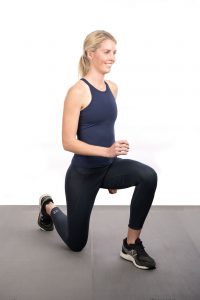Exercise for Osteoporosis -Strong Muscles and Strong Bones
Longevity Exercise Physiology Drummoyne,Edgecliff, Marrickville,Bella Vista, Randwick, Lindfield and Balmain discuss the importance of exercise for preventing and managing Osteoporosis.
Exercise not just to make your muscles strong but your bones too
Bone, like muscle, is living tissue, and constantly remodelling itself. In adults, the daily removal of small amounts of bone mineral, must be balanced by deposition of new mineral bone if strength is to be preserved. As people enter there 40s and 50s, this delicate balancing act may become unstuck. As the scale tips towards reabsorption, bones weaken, and overtime can become frail and brittle and prone to fracture. Lucky for you, there is something we can do about it. Exercise!
Osteoporosis is estimated to effect 1.2million Australians, and a further 6.3million with low bone density (osteopenia.) Any bone can be affected by osteoporosis, but most common sites are hip, spine and wrist. Anyone over 50 who experiences a broken bone from a minor bump of fall should be investigated for osteoporosis.
Hormones play a crucial role in modulating bone formation. Oestrogen promotes the activity of osteoblasts, which are cells that produce bone. Women are at greater risk of developing osteoporosis because of the rapid decline in estrogen levels during menopause. This results in approximately 2% bone loss per year for several years after menopause.
There is a common misconception that only women are susceptible to osteoporosis. And while women are at greater risk, it doesn’t mean men are out of the woods. Like oestrogen, testosterone also plays an important role in maintaining male bone health. The loss of testosterone with age is more gradual, meaning men are not exposed to the same risks as women after menopause. However, it is important to remember, some medications, such as treatment for prostate cancer (ADT) can affect testosterone levels resulting in sudden decreases in bone mineral density.
https://www.osteoporosis.org.au/diagnosis
Other risk factors include family history, calcium and vitamin D levels, other medical conditions affecting hormone levels and lifestyle factors. These all play an important role in bone mineral density. Some of these we cannot influence, but we certainly have the power to change our lifestyle to decrease our risk of developing osteoporosis. This is where exercise comes into the picture!
Exercise is protective for bone health. However, not all types of physical activity are equal in terms of protecting our bone mineral density. Although going for a swim or a ride is a great way to improve our aerobic fitness and cardiovascular health, it has zero effect on our bone health. The balancing act of reabsorption and deposition of new bone is heavily influenced by impact exercises. Weight bearing exercises such as walking, hiking, jogging, and dancing are all good examples. Strength training also plays an important role. Studies have shown that progressive strength training over a period of time can help prevent bone loss and may even build new bone. So, time to hit the gym and move some weights! Squats, deadlifts, push ups and shoulder presses are just some examples of strength exercises that target common osteoporotic sites.
So, what should your weekly exercise routine look like if you are trying to preserve your bone health? The Australian Physical Activity guidelines recommend accumulating throughout the week 150-300minutes of moderate intensity exercise, or 75-150 minutes of vigorous exercise plus, 2 resistance training sessions a week. If we include some weight bearing activities in our moderate intensity exercise, plus add in some resistance training, not only is this good for our bone density, but also has positive effects on our blood pressure, cholesterol, blood sugar and strength.

So, two important takeaways from this blog. 1. Bone is living tissue, meaning its constantly remodelling and changing, and this is influenced by exercise. 2. Weight bearing exercises and resistance training are the two most important things to include in our exercise routine if we are wanting to maintain our bone mineral density. Plus, we get other great health benefits too!
Read more about Osteoporosis here
Remember, its never too late to make a change and get moving. If exercise was a pill, everyone would be taking it!
Call Longevity 1300 964 002 to discuss your exercise options!
Written By Georgia


